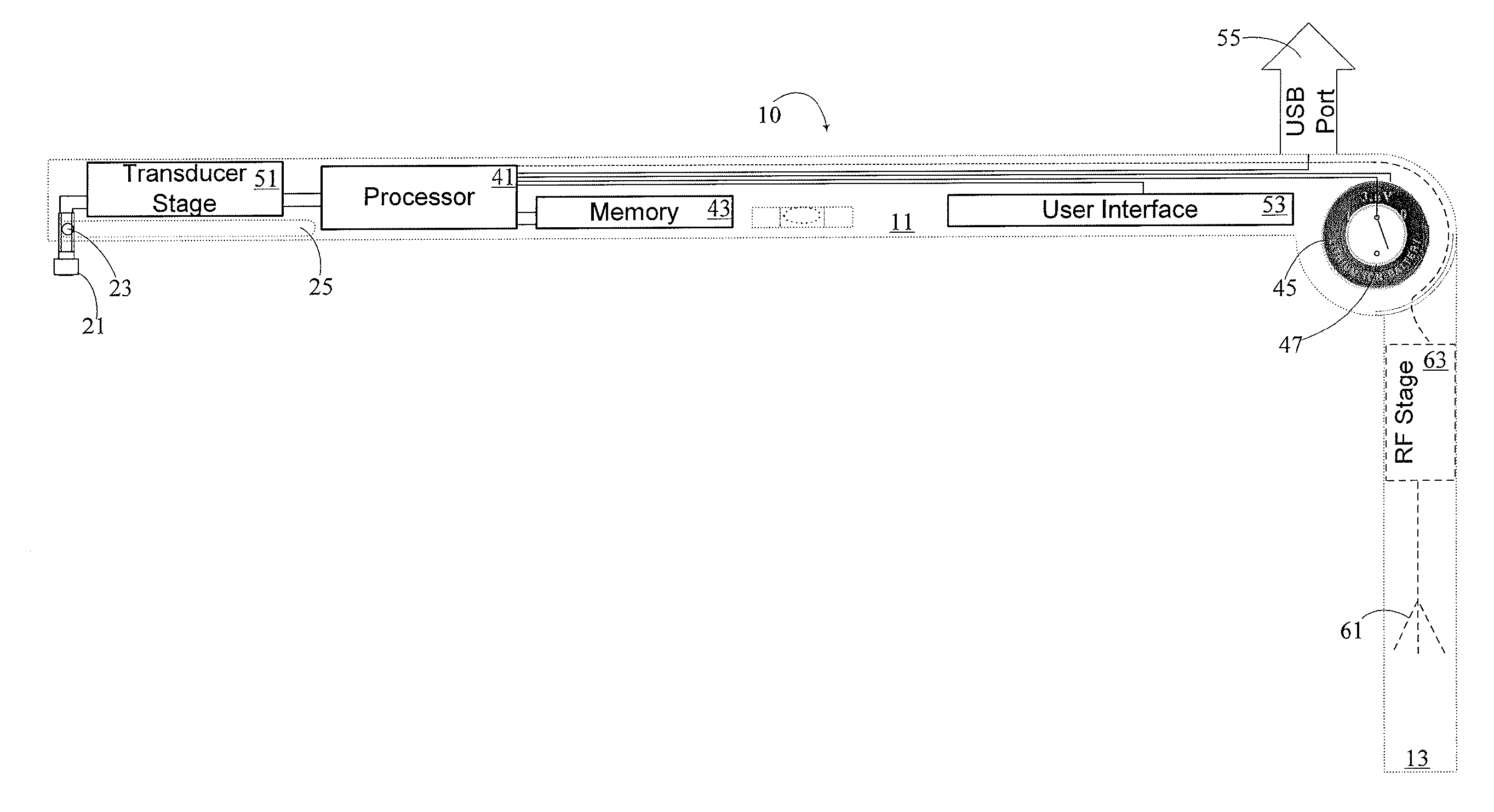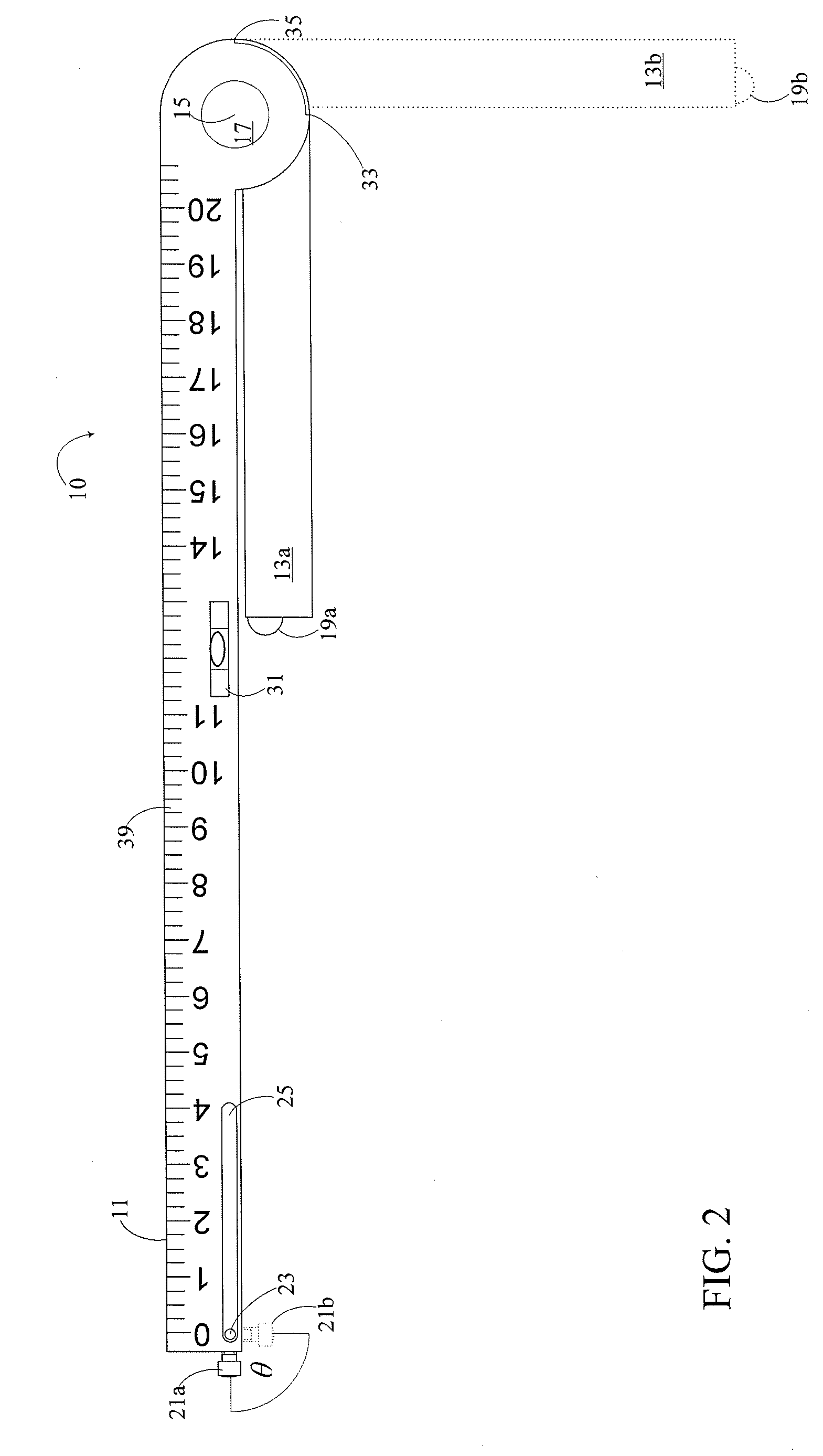Jugular venous pressure ruler
a jugular vein and ruler technology, applied in the field of medical diagnostic tools, can solve the problems of subjective measurement of jvp and raise the pressure of the pulmonary capillary wedg
- Summary
- Abstract
- Description
- Claims
- Application Information
AI Technical Summary
Problems solved by technology
Method used
Image
Examples
Embodiment Construction
[0018]By way of overview, a JVP ruler and a method for its use in measuring a jugular venous pressure in a patient, includes orienting the JVP ruler such that the second arm is collinear with a vertical line originating at a right atrium of the patient and such a the first arm is horizontal and having a transducer end situated opposite the pivot end of the first arm. The JVP Ruler has first and second arms elongate and situated to be in perpendicular relation one to the other. The arms meet and terminate at a pivot located at the pivot ends of the arms respectively, the transducer end being generally above a pulse point, the pulse point being a point on the skin of the patient where variations of the jugular venous pressure within the internal jugular vein are exhibited as at least vertical displacement of the skin. The JVP ruler is translated along the vertical line such that a rest end opposite the pivot end of the second arm is resting on the sternal angle of the patient approxim...
PUM
 Login to View More
Login to View More Abstract
Description
Claims
Application Information
 Login to View More
Login to View More - R&D
- Intellectual Property
- Life Sciences
- Materials
- Tech Scout
- Unparalleled Data Quality
- Higher Quality Content
- 60% Fewer Hallucinations
Browse by: Latest US Patents, China's latest patents, Technical Efficacy Thesaurus, Application Domain, Technology Topic, Popular Technical Reports.
© 2025 PatSnap. All rights reserved.Legal|Privacy policy|Modern Slavery Act Transparency Statement|Sitemap|About US| Contact US: help@patsnap.com



